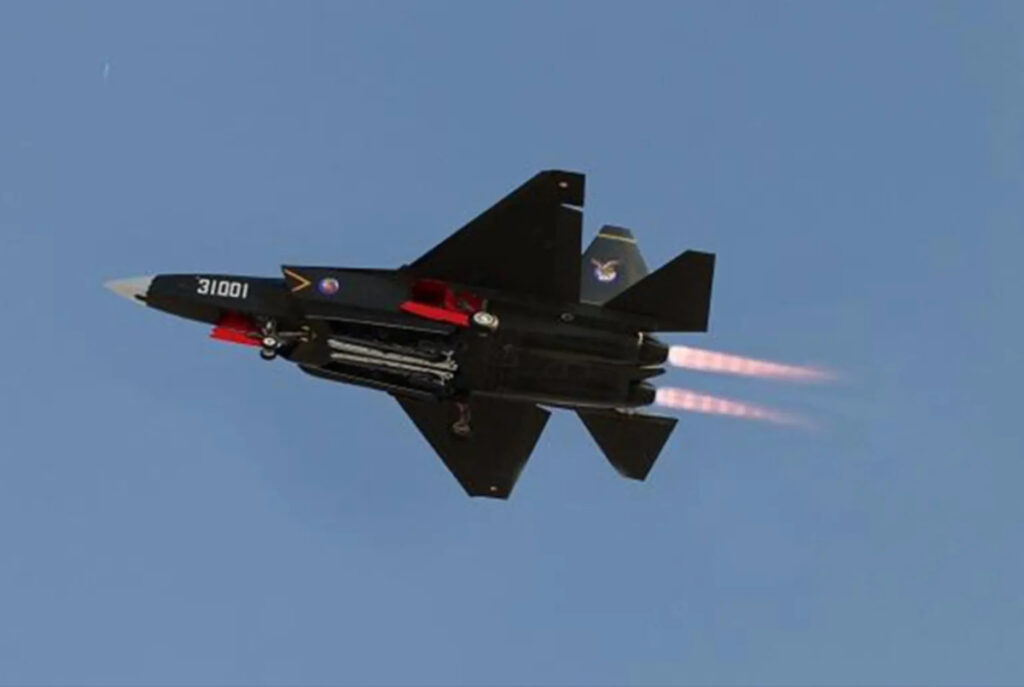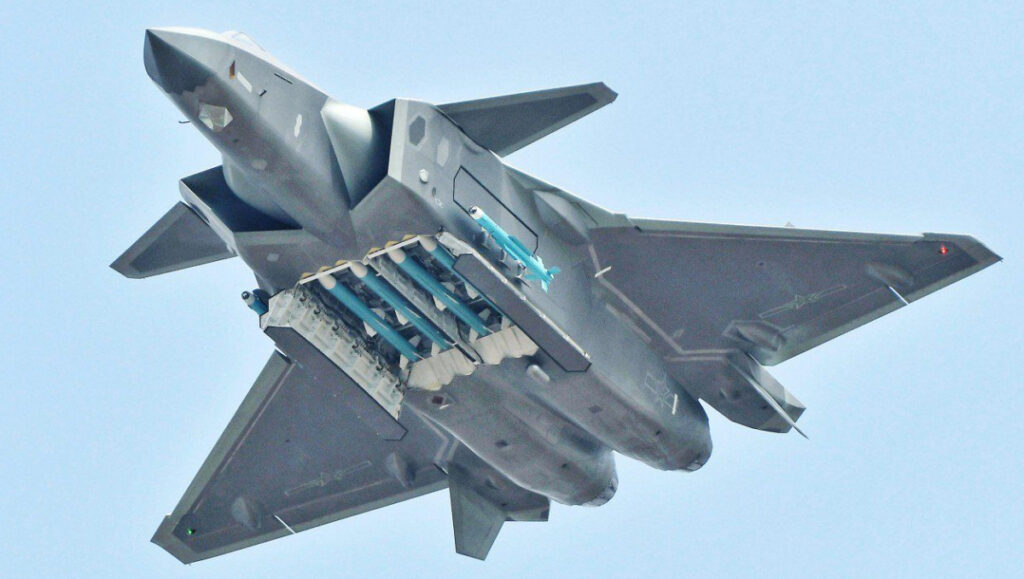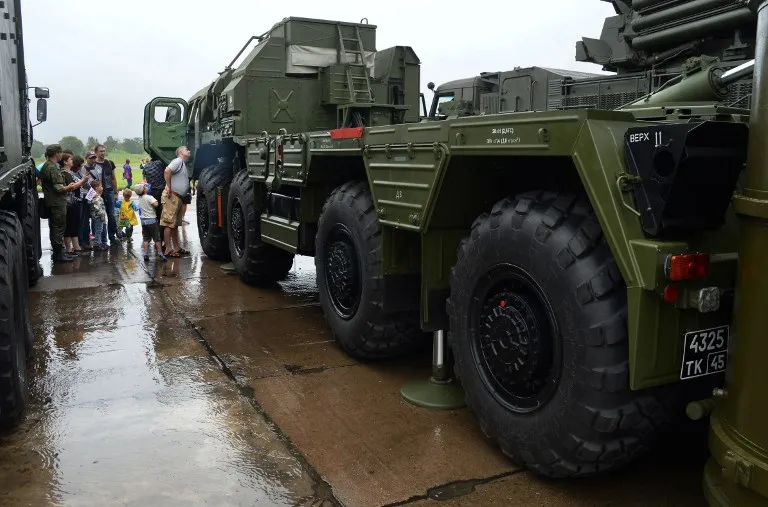J-31B and J-20 fighters will boost carrier aviation, long-range maritime strike and deep penetration capabilities vis-a-vis US and India

China’s FC-31/J-31B stealth fighter. Photo: zhihu.com.
(Written by Gabriel Honrada. Published here in Asia Times, republished with permission.)
China is on a roll with its rapid deployment of advanced fifth-generation fighters, potentially revolutionizing its airpower versus potential adversaries such as the US and India.
This month, Nikkei reported that China’s new stealth combat aircraft, the J-31B, is expected to be deployed on its third aircraft carrier, the Fujian. Nikkei mentions that the fifth-generation fighter jet, revealed by Shenyang Aircraft Industry Group in late June, is designed for aircraft carrier use and will enhance the People’s Liberation Army’s (PLA) air and sea strategies.
The report says that the J-31B, which is more challenging to detect by radars and capable of coordinating with drones, is a significant upgrade from the current fourth-generation Shenyang J-15.
It says that the Fujian, China’s largest aircraft carrier, is equipped with an electromagnetic catapult, allowing jets to carry more fuel and weapons, thus expanding their operational area and combat capabilities.
Nikkei notes that the J-31B is seen as a competitor to the US F-35 Lightning II and is part of China’s ongoing efforts to increase its deployment of fifth-generation fighter jets, including the Chengdu J-20.
Janes reported last month that the PLA Air Force (PLA-AF) has significantly bolstered its fleet with the advanced Chengdu J-20 “Mighty Dragon” fifth-generation stealth fighters. Janes says that over 11 months leading up to July 2023, the PLA-AF incorporated over 70 J-20s, bringing the total to approximately 195 aircraft.
It notes that this expansion has enabled the replacement of older fourth-generation fighters like the Shenyang J-11s and Sukhoi Su-27SK/UKBs across multiple air brigades. The report also says that as of May 2024, the PLA-AF operated 12 air brigades equipped with J-20s, with three fully outfitted with the stealth fighter.
Jane’s notes that the J-20’s enhanced capabilities, such as airborne early warning and control (AEW&C), underscore its growing importance within the PLA-AF.
The Janes report points out that China’s strategic deployment of the J-20s aligns with its objective to concurrently strengthen its five theater commands. It says recent satellite imagery indicates the presence of J-20s in the Eastern, Western, and Southern Theater Commands, with the Eastern Theater Command conducting aerial operations around Taiwan and projecting air power over the East China Sea.

The Chengdu J-20 Mighty Dragon at the 2018 Zhuhai Airshow. Credit: File photo.
Janes also notes that the increasing presence of J-20s near India, as observed at Shigatse Peace Airport in Tibet, suggests a strategic shift in China’s military posture.
The J-31B may replace China’s carrier aviation workhorse, the J-15. In November 2022, Asia Times pointed out that Chinese media have derisively referred to the aircraft as a “flopping fish” because of its minimal range and weapons payload.
The J-15’s flight tests on the ski-ramp carrier Liaoning have shown that it can only travel up to 120 kilometers from the carrier when carrying heavy weapons. Additionally, if the J-15 is loaded with fuel, it can only carry up to 2 tons of weapons, even though its capacity is 12 tons.
The design of the Liaoning and Shandong aircraft carriers’ ski ramps presents a significant challenge for launching aircraft weighing over 26 tons unless the aircraft has more powerful engines. Implementing the electromagnetic aircraft launch system (EMALS) on China’s third aircraft carrier, the Fujian, may allow it to use newer aircraft types such as the J-31B.
On capability, the South China Morning Post (SCMP) mentioned this month that in addition to stealth, the J-31B features weapons bays on both sides, noting that such a feature could significantly increase its combat capabilities.
SCMP says that each weapons bay can carry two missiles, distinguishing the J-31B from the US F-22 and China’s J-20, which have side weapon bays but can carry only one missile in each. It notes that the J-31B’s added weapons payload can increase its combat capabilities in close-range fighting.
As for armaments, Brandon Weichert notes in an article this month for The National Interest (TNI) that the J-31B has an active electronically scanned array (AESA) radar, an electro-optical targeting system and a helmet-mounted display system.
Weichert mentions that the J-31B can carry an assortment of munitions, such as the PL-10 and PL-15 air-to-air missiles (AAM), various guided bombs, and air-to-ground missiles (AGM). He says that while many dispute China’s claims about the J-31B, the aircraft may be a decent counterpart to the US F-35.
As for the J-20, a February 2017 China Power report says that opinions vary about the J-20’s role, ranging from the aircraft being a long-range interceptor for aerial engagements to a long-range strike aircraft designed to penetrate enemy air defenses and destroy critical infrastructure.
The report says that the J-20 could target intelligence, surveillance and reconnaissance (ISR) aircraft and aerial tankers with long-range AAMs in an interceptor role. In a strike role, it says that possible targets could include airfields, command centers, and other military installations.
Furthermore, the report says that the J-20’s stealth and range could enable it to threaten US warships and that J-20s in a maritime strike role may be a more significant threat than short-range air superiority fighters.
Newsweek mentioned in an article last month that China’s deployment of J-20 fighters at Shigatse and H-6 bombers at Hotan in the Taklamakan Desert raises the threat to India in its Sikkim-Arunachal Pradesh region.
While the Newsweek report says that India’s S-400 surface-to-air missiles (SAM) and Rafale fighters can challenge China’s J-20, the J-20’s stealth capabilities must be factored into its air threat wargames.

A transport and launch unit of the S-400 anti-aircraft missile system India purchased from Russia. Photo: Vitaliy Ankov / Sputnik
Despite China’s advances in fifth-generation fighters, such developments may be overrated while China may still face significant challenges in developing such sophisticated aircraft.
Owen Sirrs says in a 2020 Journal of Indo-Pacific Affairs article that as political regimes may flaunt sophisticated military equipment for prestige reasons, China is no exception and that alarmist conclusions about the J-31B should not be drawn from limited glimpses at a distance.
Sirrs says that while China has made significant strides in fighter aircraft design, it is still behind in critical technologies such as jet engines.
In line with that analysis, Alex Hollings says in a February 2024 TNI article that a stealth fighter’s performance relies heavily on its engine’s power, and only the US can build high-end jet engines in quantities enough to equip a high-end fighter fleet.
Hollings notes that while China and Russia are fielding new jet engines such as the WS-15 and AL-51, new US technologies like adaptive cycle engines with advanced composites and ceramics may maintain the US’s lead in jet engine production.
Sirrs also points out that a modern fighter integrates avionics, weapons systems, electronic countermeasures, radar, and other systems, not just one piece of cutting-edge technology.
Lastly, Sirrs says that China’s J-20 and J-31B may face obsolescence problems as they employ technology developed by the US more than two decades ago. He adds that advances in aviation technology, such as sensors and combat drones, could render China’s stealth fighters obsolete in a war scenario.








